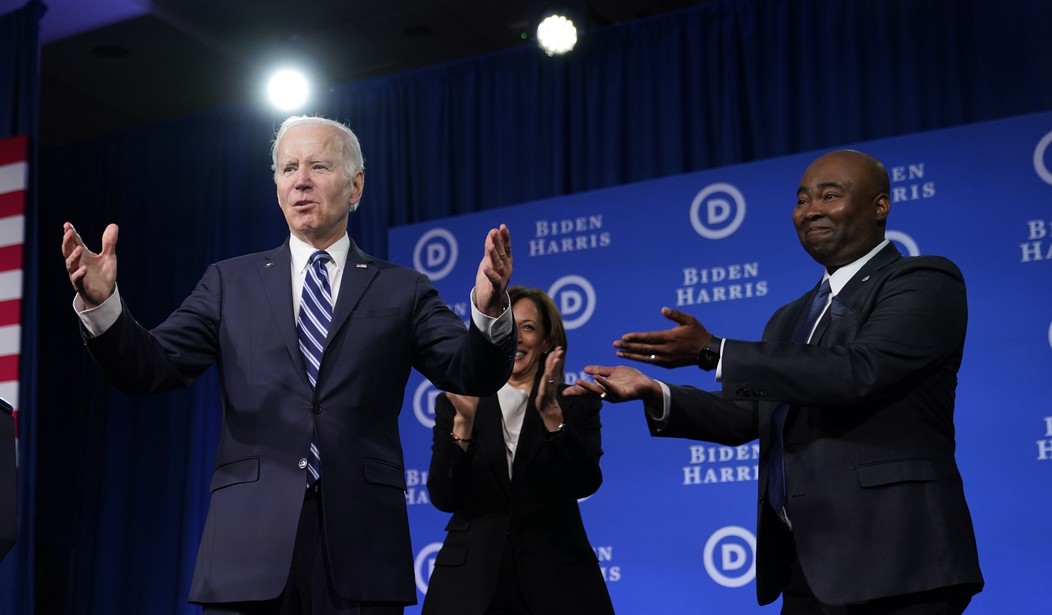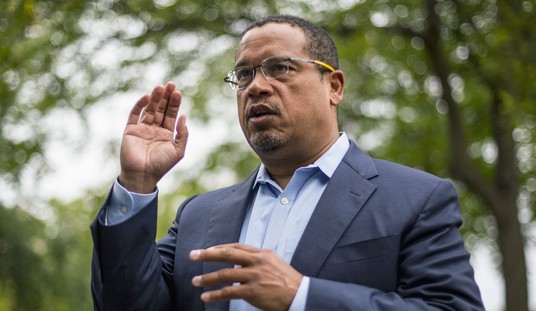Gee, maybe Joe Biden had a point about Democrat 'elites' pushing him out of the race. Beege alluded to the whiplash that New York Times readers must now be experiencing as their columnists and editors go back and forth on Biden's prospects. Like Beege, The Clash's most famous song has been running through my head since the debate, and it's clearly haunting the Gray Lady.
However, the Times escalated its prophecies of doom today in two key analyses. First off, Bill Clinton adviser Doug Sosnik offered an extensive analysis of the Electoral College scenarios that appear in play, and he's not at all optimistic about Biden's chances. In fact, Sosnik only sees one scenario in which Biden can get to 270, and that's improbable at best:
As I did for Times Opinion in April, I’ve drawn on my years as a Democratic strategist to look at polling, advertising and campaign spending in the key states in this election. As several maps illustrate below, I’ve never seen such a grim Electoral College landscape for Mr. Biden: He not only faces losing battleground states he won in 2020, he is also at risk of losing traditional Democratic states like Minnesota and New Hampshire, which Hillary Clinton and Barack Obama carried. If current trends continue, Mr. Trump could rack up one of the most decisive presidential victories since 2008. ...
Due to his worsening political situation, Mr. Biden now has only one narrow path to winning 270 electoral votes and the presidency in November, a more dire situation than he faced when I looked at his potential paths in April and a reality his campaign acknowledged in a strategy memo on Thursday.
Coincidentally or not, this analysis appeared just hours after Biden declared during his presser that he would only consider withdrawing if Democrats proved he couldn't win. Sosnik doesn't go quite that far, but he comes very close. The only path to 270 for Biden is to hold the Blue Wall states of Wisconsin, Michigan, and Pennsylvania, while also keeping New Hampshire, New Mexico, and Virginia. Let's look at the RCP aggregate polling data in those blue-wall states, and where they were at this time in 2020:
- Wisconsin: Trump 47.2, Biden 44.6 (2020: Biden up 6.5)
- Michigan: Trump 46.0/45.4 (2020: Biden up 7.7)
- Pennsylvania: Trump 48.3/43.5 (2020: Biden up 7.0)
It's not difficult to grasp Sosnik's pessimism. Pennsylvania is particularly dispiriting, he writes, because Biden has dominated the airwaves in the Keystone State so far this cycle, and ... he has nothing to show for it:
Each of the three states poses particular challenges for Mr. Biden. Current polling shows him trailing Mr. Trump by as many as five points in Pennsylvania and Wisconsin and more narrowly in Michigan.
The deficit in Pennsylvania must be particularly disconcerting for Mr. Biden and his campaign, given the time and resources devoted to the state. He has made 10 visits since the beginning of this election cycle and has outspent Mr. Trump and his supporters on network television ads by a margin of over two to one in the last 30 days, according to an analysis by the ad-tracking firm AdImpact.
Sosnik's bottom line: Trump may well be on his way to an Electoral College landslide, the most lopsided since Barack Obama's first presidential election. You can bet that Democrats will be clipping this analysis and sending it to the White House for Biden's review.
They will also make sure Biden reads the other devastating analysis from the NYT that predicts the landslide could run all the way down the ballot, and not just in these three states. Biden's decision to stay the course could turn more blue states purple, and maybe even maroon-ish:
As President Biden insists he will stay in the presidential race, Democrats are growing increasingly alarmed that his presence on the ticket is transforming the political map, turning light-blue states into contested battlegrounds.
Down-ballot Democrats, local elected officials and party strategists say Minnesota, New Hampshire, New Mexico and Virginia — all of which Mr. Biden won comfortably in 2020 — could be in play in November after his miserable debate performance last month. ...
The dynamics are different in each of the four possible battleground states: Minnesota, for instance, has a knack for voting for third-party candidates, while New Mexico has a large population of Hispanic men, a group that Mr. Biden has struggled to win over. But consistent across all four states are widespread fears about Mr. Biden’s age, unhappiness with inflation and electorates that are more closely divided than many national observers realize, according to interviews with local Democratic officials and strategists.
These are definite problems. The question remains, however, whether any alternative to Biden could do better. To answer that question, analysts have to take into account the circumstances under which a different nominee would emerge, too. Democrats would have to deal with primary voters that got gaslighted by the Bidens and the Democrat establishment over the past year, as well as trust the same Democrat establishment to anoint a nominee rather than have voters choose the top of the ticket. That gaslighting might explain some of the falloff of support for the ticket, and having a smoke-filled back room choose a replacement likely won't do much to rebuild trust in the party.
Nevertheless, the Gray Lady persists in amplifying the drumbeat for a party putsch against Biden. Perhaps they and other establishmentarians figure it can't possibly get any worse, but just wait until an open convention pits all of the party factions against each other in a Thunderdome runoff for power.








Join the conversation as a VIP Member